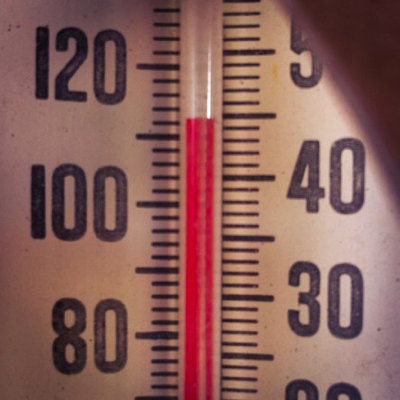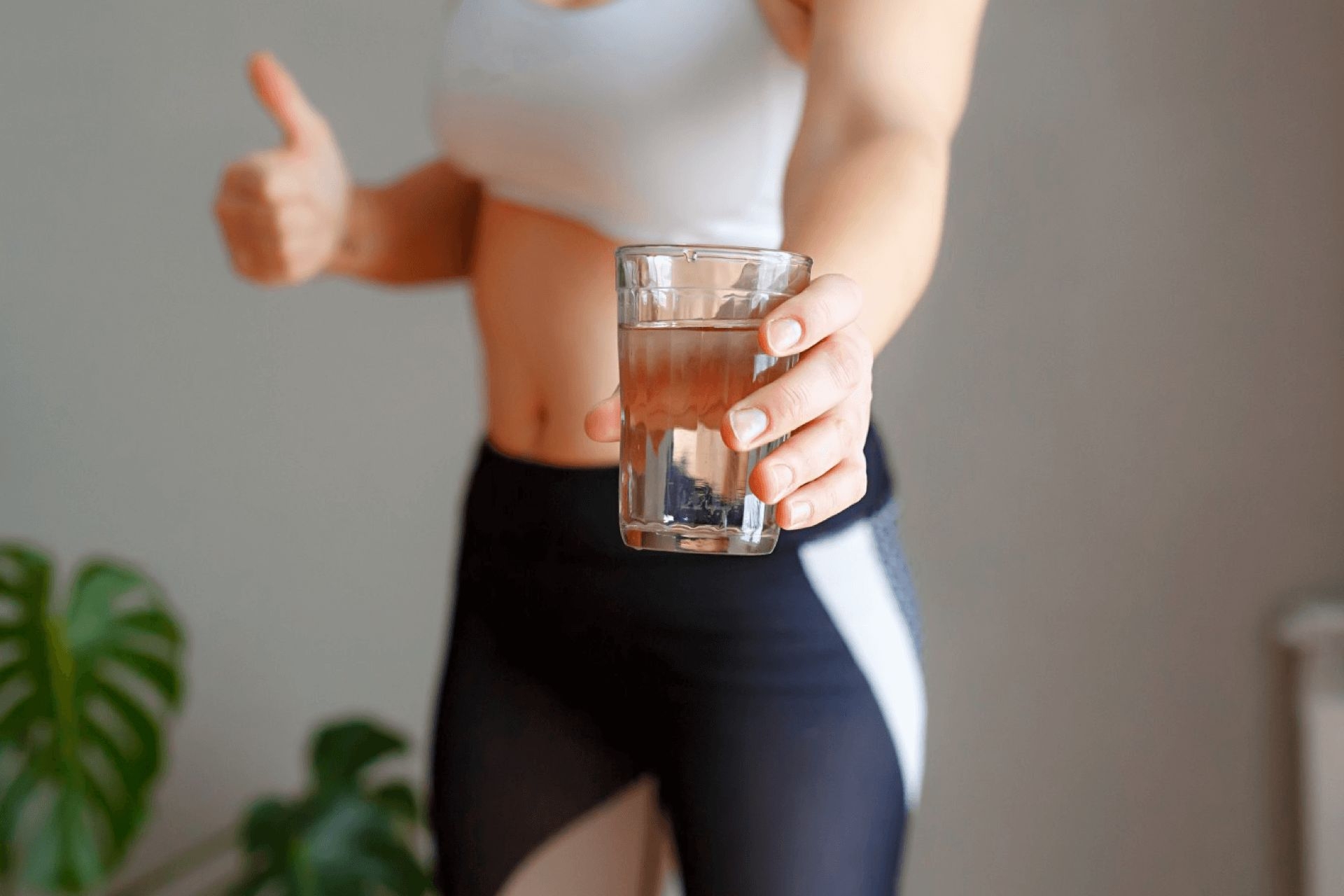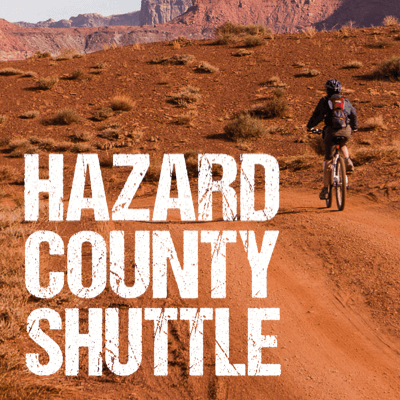Blog >
How Cyclists Recover After Exercise in Extreme Heat:
October 16th, 2021
Author
Hazard County Shuttle
Summary:
Cycling in hot and dry conditions can be taxing on your system, here are our top tips for recovering like an athlete while riding in the extreme heat that can hit Moab, Utah.
Category: Nutrition

Heat Recovery Beat The Heat
In addition to some of the most riveting racing in years, the extreme heat is the big news out of the Tour de France. The country is currently gripped by a heat wave, and the Tour peloton has been working its way through the oppressive heat in the south of France. Staying cool and hydrated on the bike is a major endeavor, and riders may consume up to two liters of fluid per hour during hot stages. They also dump lots of water over their heads and jerseys to help facilitate evaporative cooling, and place ice socks in their jerseys as well. Despite all of these efforts, it is nearly impossible for a rider to take in as much fluid as they lose during these hot days, and the challenge of replenishing fluids and recovering from the exposure to extreme heat starts as soon as they cross the finish line.
Success at the Tour de France – whether you're competing for a jersey, doing your job for the team, or just trying to survive – comes down to recovery between stages. Hard racing takes its toll, and the extreme heat adds to the challenge. The article below examines the hydration and thermoregulation strategies riders use – and that you can use – to recover after exercise in extreme heat.
Heat is the enemy of endurance performance and an underlying cause for diminished performance, dehydration, heat stress, gastrointestinal distress, and impaired recovery. We present you with the tools and information you need to PREPARE for training and events, PERFORM at your best, and RECOVER optimally when temperatures soar.
Quick Facts
- Consume 150% of fluid weight lost during exercise within 4 hours after exercise.
- Recovery drinks are recommended following workouts that exceed 1500-2000 kilojoules/calories or work. Plain water and post-workout meal should suffice for lower intensity workouts and/or sessions shorter than 60-90 minutes.
- Abstain from alcohol following workouts that are valuable to your training.
- Proactive cooling after exercise enhances recovery by reducing heat stress and promoting high-quality sleep.
RECOVER to Optimize Tomorrow's Performance
It's crutial to monitor your day-to-day hydration, and to increase your fluid intake through deliberate choices throughout the day, acclimate to high temperature environments, and pre-cool your body to delay the onset of heat stress. Keep in mind hot weather hydration, whether to drink sports drink or water, and thermoregulation strategies for staying cool. Post-workout and post-event hydration and thermoregulation strategies for maximizing recovery. The Science Behind Heat Illness.
Post-Workout Hydration
Replenishment and cooling are the two most important priorities in the hours directly after training or competition. Working out in hot weather increases the thermal stress on your body, which leads to more profuse sweating and a greater likelihood that you will lose at least 2% of your bodyweight by the end of a training session or event. In addition, elevated core temperature remains a problem even after you stop exercising. We'll cover that later. First, let's talk about replenishment.
How Much Should I drink?
In the first 4 hours following exercise you should consume 150% of the fluid weight you lost during exercise. In other words, if you lost 32 ounces (two pounds), you should consume 48 ounces of fluid within the first four hours afterward. Chugging 48 ounces of fluid immediately after you walk into your house does not fulfill this recommendation. When you consume large volumes of fluid very quickly, much of it passes straight through you and gets excreted as urine. The smarter choice is to gradually consume fluids over the period of a few hours.
Should I Drink A Recovery Drink?
Most of your post-workout fluid intake should be plain water, especially if you are also planning on eating a meal within about an hour after exercise, and/or your exercise session was relatively short (60-90 minutes).
Recovery drinks conveniently deliver carbohydrate, electrolytes, fluid, and protein and they are typically consumed immediately after exercise when your body is ready for rapid replenishment. This 60-90 minute post-exercise period is often referred to as the “glycogen window” because it is when your body is able to replenish glycogen stores most rapidly. But that still doesn't mean you need a recovery drink after every workout.
Replenishment of fluid, electrolytes, carbohydrate, and protein doesn't cease after the first 60-90 minutes post-exercise. It just gradually slows down. If you only trained for 60-90 minutes, glycogen replenishment shouldn't be a big challenge because most likely you didn't empty the tank in the first place. And even if you did, your glycogen stores will be completely replenished in 24 hours just from your normal food intake.
When should you use a recovery drink? If you are training or competing more than once in a single day, a recovery drink after your first session is a good idea. If you are riding back-to-back days of long sessions (like during a bike tour, training camp, or stage race), then it's a good idea as well. Following individual bouts of exercise a recovery drink may be warranted following sessions that accumulate about or more than 1500-2000 kilojoules or calories of work. (Kilojoules accumulated roughly equal calories expended for cyclists. Runners and other athletes should use calories.) This could be very hard 90-minute interval session or a 3-4-hour moderate pace session, but the rationale is to base the need for a recovery drink on the whether there was sufficient energy expenditure to substantially deplete carbohydrate stores and cause significant training stress.
What about alcohol?
The post-workout or post-competition beer seems to be becoming a more engrained tradition within endurance sports than ever before. From a camaraderie and cultural standpoint, that's all well and good. But make no mistake, alcohol does not help recovery, does not help post-exercise fluid replenishment, and does not do anything positive for performance.
If you the workout you just finished was valuable to you, and if the workout you want to do tomorrow is valuable to you, don't drink alcohol today. If weight loss is part of your training goals, stop consuming alcohol. If you have reached the end of an event that was your goal, or you at least understand and accept the fact you're not doing anything to help your fitness or performance, then enjoy a few drinks (responsibly, of course).
Post-Exercise Thermoregulation
Have you ever come back from a difficult and hot training session and felt like you had a fever for the rest of the day? Has everyone else been comfortable in a given room, but you feel hot? Have you gone to sleep at night feeling like you're radiating heat? Part of the problem is that once you stop exercising, the cooling mechanisms that were running full-tilt slow down or become less effective.
Evaporative cooling works best with airflow over the skin, which is much greater when you're moving! Elevated heart rate and dilated blood vessels circulate blood – and heat – to the skin more quickly. After exercise, you're sitting still with lower heart rate and your blood vessels aren't as dilated. As a result, you have more of a challenge dissipating the heat you already have stored throughout the body.
Some people have looked at this elevated core temperature after exercise as evidence of increased metabolic activity, or increased caloric expenditure, after exercise. Then they extended that theory to say calorie burning (for weight loss) continues long after exercise. However, research (Kenny, et al., 2008) shows that because of the rapid decrease in heat dissipation following exercise, nearly half the heat stored during 60 minutes of exercise remained in muscle tissue an hour after exercise.
Proactive cooling after exercise in hot environments is crucial. Elevated core temperature means continued heat stress. It leads to disturbed sleep, which then affects the activity of hormones that are only released during restful, deep sleep. In other words, to optimize your post-exercise recovery after training or competing in the heat, you have to chill out, literally. Here's how to do it:
Active Cooldown
To lessen the impact of a sudden cessation of activity, an active cooldown can help to continue dissipate heat. A light spin on the bike, walking after a run, or light swimming after a workout keeps circulation slightly elevated, allowing heat transfer from muscles to skin to continue. You will also continue sweating, albeit less profusely. The caveat to this is that ambient temperature makes a difference. If you are in a very hot environment, moving to a cooler environment may be more beneficial than actively cooling down.
Consume cold fluids and/or ice slurry drinks
To encourage cooling from both inside and outside, consume cold fluids or ice slurry beverages. Some of the internal heat will be transferred from your body to the fluid as its temperature rises to body temperature. The potential downside to this strategy is that the reduced circulation of blood to the skin reduces the eventual transfer of that heat to the environment. You may be transferring some heat to the fluid ingested, but that heat is still in your body.
Encourage evaporative cooling
A big part of the reason you want to keep moving at the end of your workout or competition is to encourage evaporative cooling. You want to continue sweating, albeit less profusely, and maintain airflow over the skin. It doesn't matter whether this is accomplished via actual movement or by a fan, it's just important that there's air moving over your body.
Cold water immersion
Go jump in a lake! Or a creek, or the shower. For a long time athletes have used post-exercise ice baths for recovery. They may work, but probably not for the reason you think. The original rationale for ice baths was to reduce inflammation and prevent delayed-onset muscle soreness. However, some post-exercise inflammation is a necessary stimulus for adaptation, so ice baths may actually hinder performance gains.
On the other hand, cold water immersion following exercise in hot environments has a different purpose. You can increase the effectiveness of heat dissipation by increasing the temperature gradient between your body and the environment, and increase heat transfer through contact with water rather than air. Whether it is jumping in a lake, sitting in a creek, wrapping yourself with cold towels, or taking a lukewarm or cold shower, the goal should be to get wet to cool off.
Combining these post-exercise thermoregulation techniques works even better. Consume a cold drink while actively cooling down in a cool environment and/or with airflow or wrapped in a cold, wet towel.
Cool Down to Improve Sleep
Getting a good night's sleep is crucial to recovery, and heavily dependent on temperature. Your body temperature normally drops as you sleep and increases again as you wake up. Trying to sleep in a hot environment or with an elevated body temperature is difficult. To improve sleep quality after a hard training session or competition on a hot day, do your best to rehydrate before bed (but gradually so you're not getting up every hour to go to the bathroom), take a cool shower before going to bed, and reduce the temperature of the room.
Summary
Athletes spend a tremendous amount of time focused on the design of workouts and training program, but far less time considering the impact of outside factors on exercise performance. Heat is an endurance athlete's enemy. It robs you of the ability to perform and the ability to recover from training stress. To perform at your best you not only need to build the biggest and best aerobic engine you can, but you also have to make sure you can access as much of that engine's power as possible in any given environment. All other things being equal, the athlete who can cope with heat will always have a competitive advantage.


